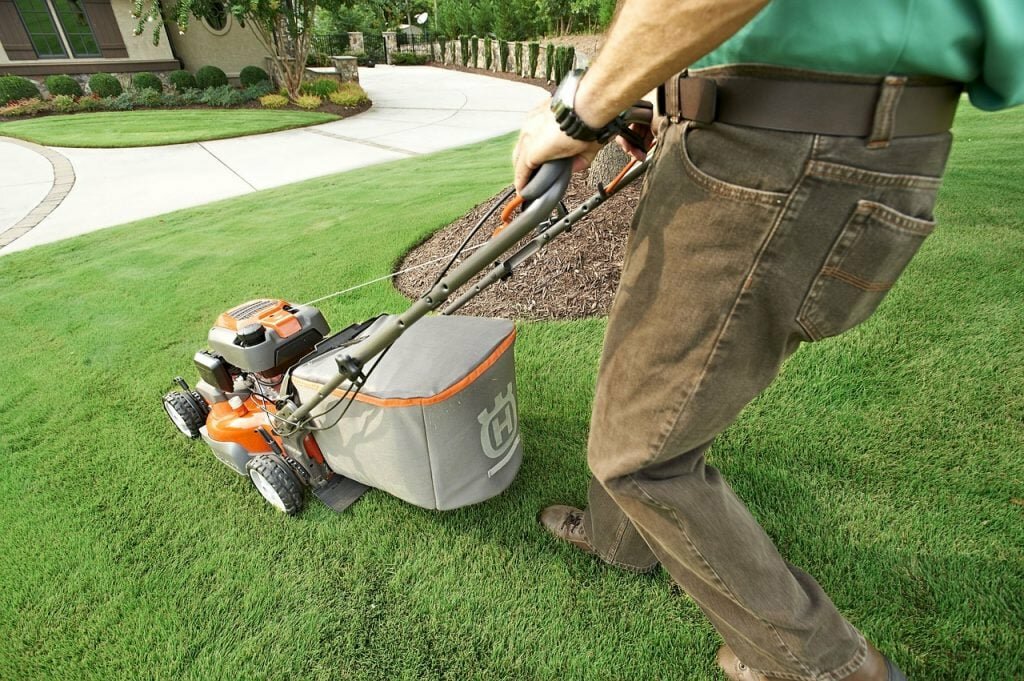When you rent a property with an adjoining lawn, who is responsible for mowing it, you or your tenant? What about aerating, dethatching, and fertilizing it? What about landscaping for multi-family properties? What do you do when tenants want to put in a vegetable patch or flower garden? How can you minimize dog damage when tenants have pets in your rental units? Here are some great tips to get you started on your lawn treatment.

Lawn and landscaping maintenance for rental properties often falls into a gray area, where it’s easy to get confused as to whether it’s the tenant’s or the landlord’s responsibility. You can avoid headaches by spelling out tenants’ lawn care responsibilities in the lease, making lawns and landscaping low-maintenance at your rental units, setting clear rules for tenants, and using commercial lawn management, at least for specialty tasks.
As a landlord, the last thing you need to spend your time on is mowing, edging, and raking your tenants’ lawns. If you rent out single-family homes or even multi-family units with adjacent yards, you need to spell out in your lease exactly which lawn care chores are the responsibility of the tenant. It’s usually reasonable to ask that tenants keep lawns mowed during the spring, summer, and early fall, when grass is actively growing. You can also require tenants to rake leaves in the fall, and to assume responsibility for snow removal from sidewalks, driveways, and porches in the winter – put it all in the lease. Make sure to provide the tools tenants need to complete these lawn care chores, like blades for mulching, mower, rake and gardening kit.
However, if you own an apartment building or a multi-family unit larger than a duplex, you should hire a commercial landscape maintenance service to take care of mowing, fertilizing, and snow removal. Tenants who rent single-family homes tend to want a yard and are open to caring for it, but those who rent apartments are probably specifically hoping to avoid lawn care chores.
It’s one thing to ask your tenant to keep the grass mowed and the leaves raked. It’s quite another to ask him or her to spend a weekend aerating and dethatching a rented lawn with rented, gas-powered lawn equipment. If you want specialty tasks like lawn fertilization, aeration, dethatching, or overseeding, or if you need the lawn treated for diseases or insect problems, hire a lawn care company for landscape maintenance. Your tenants probably don’t have the time, money, or inclination to do it themselves.
When it comes to lawn care and landscaping for apartment buildings and other multi-family units, it’s best to minimize the amount of grass to make lawn care easier. Lean towards low-maintenance landscaping instead. Native plants, hardscaping, weed control cloth, ground cover, paving stones, and even artificial turf can all make landscaping and lawns at your rental properties much easier to maintain.
Many tenants who move into single-family homes with adjoining lawns want to put in vegetable or flower gardens. Gardening tenants can vastly improve your rental home’s curb appeal, especially if they put in perennial plants, trees, and shrubs. But you should clarify expectations and requirements for tenants who want to garden in the lease.
Research which invasive plants to avoid allowing tenants to plant on your rental property, and list them in the lease. When deciding whether to allow tenants to put in permanent plants and landscaping, consider any HOA rules your property is subject to, and give tenants clear guidelines – again, spelled out in the lease – for where and how to plant. Consider installing raised beds for tenants who want to grow vegetable gardens.
You can always avoid dog damage to your rental property lawns by forbidding pets, but pet owners need places to live too, and if you do decide to rent to tenants with pets, set aside a specific area outside for pets to relieve themselves. That’s a lot easier than asking tenants to rinse off the grass every time their dog pees outside. While you should require tenants to pick up after their pets, pet relief areas can minimize the gross factor when tenants do forget to clean up a pet’s leavings.
When you’re a landlord, you don’t have the time to look after your tenants’ lawns. But you need to keep those lawns well-maintained in order to attract future tenants. Make sure your tenants know their responsibilities, and use a lawn care company for the specialty stuff. With clear expectations, both you and your tenants can enjoy your rental property’s outdoor space.